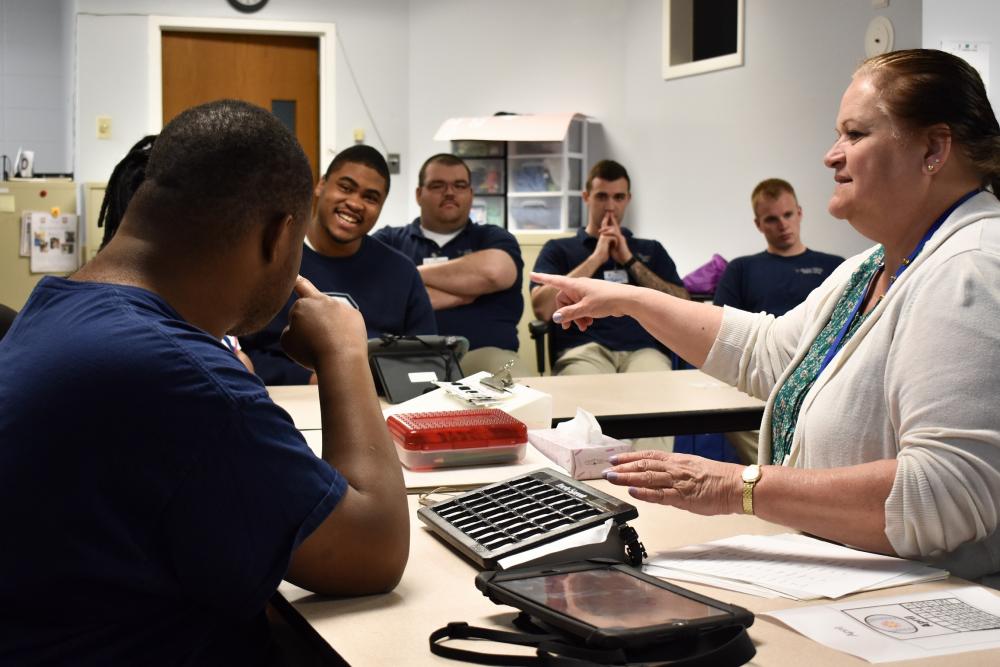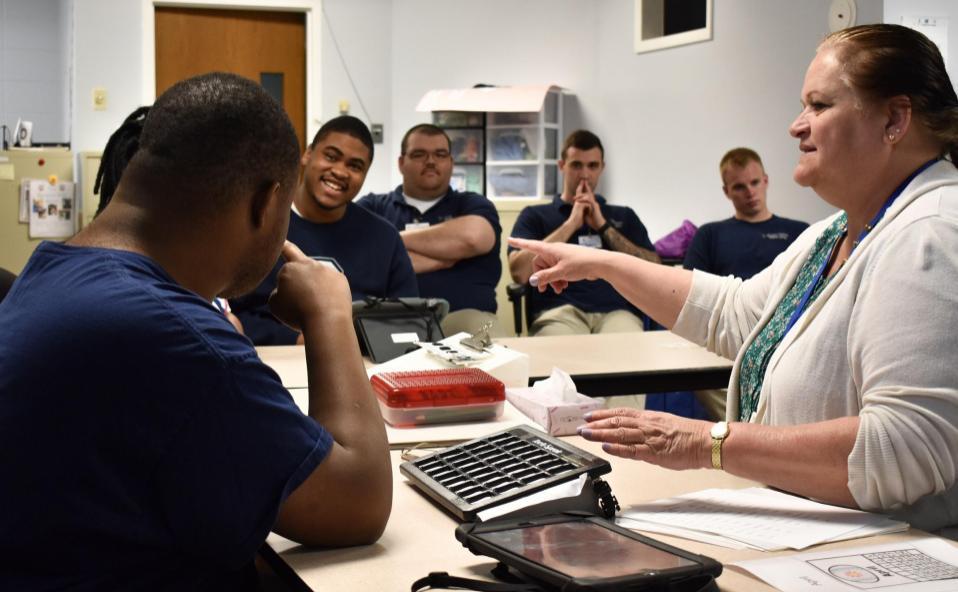Chesapeake College recognizes the importance of specialized training for first responders who may interact with individuals with disabilities including autism spectrum disorders. As a component of the college’s paramedic program, Emergency Medical Technicians (EMT’s) participate in hands-on awareness training at Benedictine during the month of April.
Benedictine’s special education teachers, therapists, nurses, and behavioral specialists all play a role in educating the students. The small-group training on campus provides students with the tools they need to communicate and respond effectively and safely to emergency situations involving individuals with multiple disabilities.
“We call it the 17 second rule,” said Benedictine Teacher, June Ward. “It may seem like a lot, but that is the amount of time individuals need to process and respond to a direction.”
 For a paramedic, those directions could be as simple as, “Where does it hurt?” An understanding of processing times and the importance of visual cues, such as a picture, can be keys to effective communication during an emergency.
For a paramedic, those directions could be as simple as, “Where does it hurt?” An understanding of processing times and the importance of visual cues, such as a picture, can be keys to effective communication during an emergency.
“My experience here so far has been truly eye opening,” said EMT and paramedic student, Bradley Garner. “I can see how each individual is different and how our approach has to be case specific with a tailored treatment plan.”
During training, students toured different program areas and clinical services including physical therapy, Total Communication classrooms, music therapy, nurses’ station and the behavioral resource team.
While on campus, students were able to observe Benedictine’s skilled staff and the various supports and techniques they use, as well as become familiar with the clients served here. Working within this population it is important to understand the difference between mental age verse chronological age, behavioral challenges and more commonly associated medical issues.
“We’ve been able to ask about what challenges to expect when doing patient assessments, like getting blood pressure or doing a physical evaluation,” said EMT and paramedic student Brandon Givens. “I’ve learned about applying pressure as a calming technique here which could be used in the field, as well as the School’s protocols so we know how to step in if and when we get the call.”



Write a Letter to the Editor on this Article
We encourage readers to offer their point of view on this article by submitting the following form. Editing is sometimes necessary and is done at the discretion of the editorial staff.